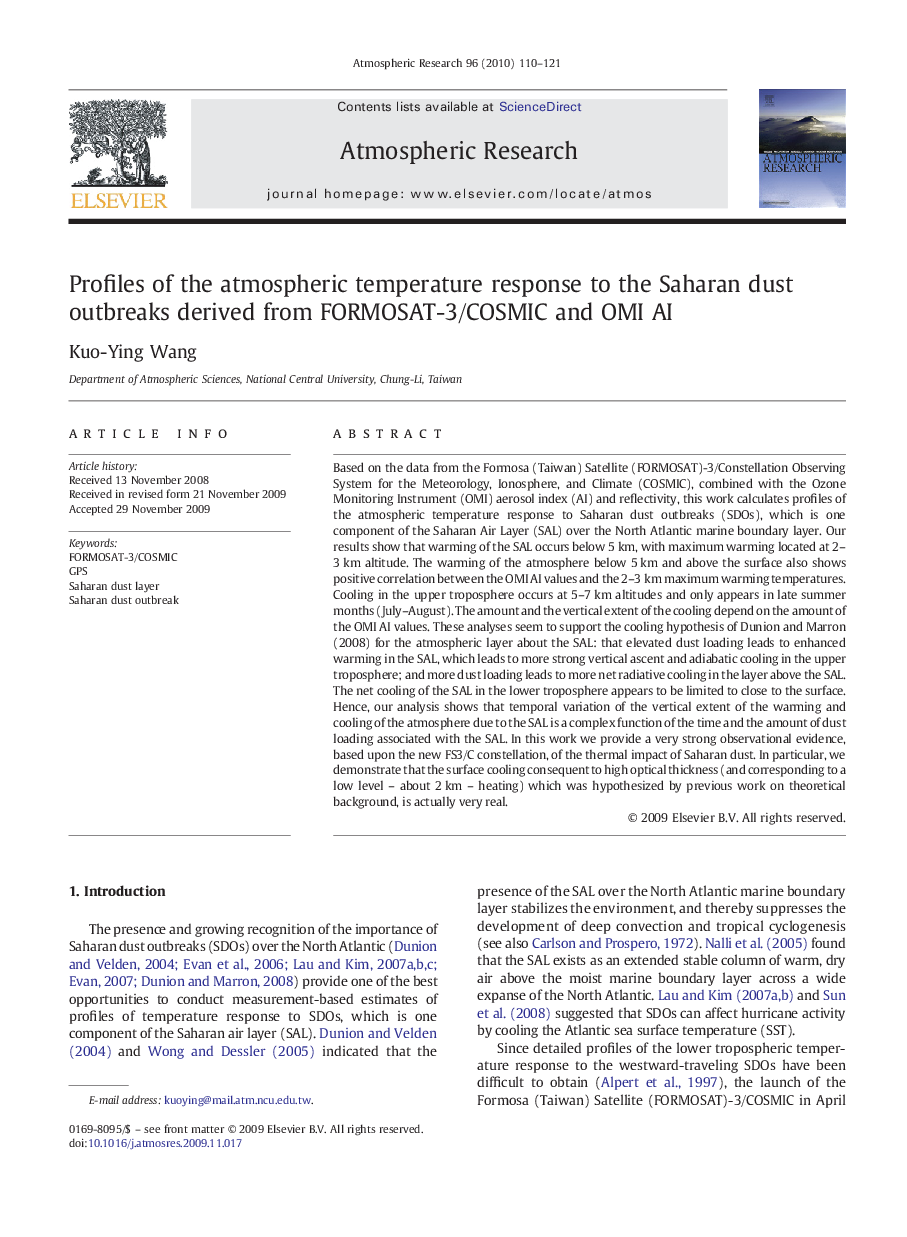| کد مقاله | کد نشریه | سال انتشار | مقاله انگلیسی | نسخه تمام متن |
|---|---|---|---|---|
| 4450807 | 1311718 | 2010 | 12 صفحه PDF | دانلود رایگان |

Based on the data from the Formosa (Taiwan) Satellite (FORMOSAT)-3/Constellation Observing System for the Meteorology, Ionosphere, and Climate (COSMIC), combined with the Ozone Monitoring Instrument (OMI) aerosol index (AI) and reflectivity, this work calculates profiles of the atmospheric temperature response to Saharan dust outbreaks (SDOs), which is one component of the Saharan Air Layer (SAL) over the North Atlantic marine boundary layer. Our results show that warming of the SAL occurs below 5 km, with maximum warming located at 2–3 km altitude. The warming of the atmosphere below 5 km and above the surface also shows positive correlation between the OMI AI values and the 2–3 km maximum warming temperatures. Cooling in the upper troposphere occurs at 5–7 km altitudes and only appears in late summer months (July–August). The amount and the vertical extent of the cooling depend on the amount of the OMI AI values. These analyses seem to support the cooling hypothesis of Dunion and Marron (2008) for the atmospheric layer about the SAL: that elevated dust loading leads to enhanced warming in the SAL, which leads to more strong vertical ascent and adiabatic cooling in the upper troposphere; and more dust loading leads to more net radiative cooling in the layer above the SAL. The net cooling of the SAL in the lower troposphere appears to be limited to close to the surface. Hence, our analysis shows that temporal variation of the vertical extent of the warming and cooling of the atmosphere due to the SAL is a complex function of the time and the amount of dust loading associated with the SAL. In this work we provide a very strong observational evidence, based upon the new FS3/C constellation, of the thermal impact of Saharan dust. In particular, we demonstrate that the surface cooling consequent to high optical thickness (and corresponding to a low level – about 2 km – heating) which was hypothesized by previous work on theoretical background, is actually very real.
Journal: Atmospheric Research - Volume 96, Issue 1, April 2010, Pages 110–121